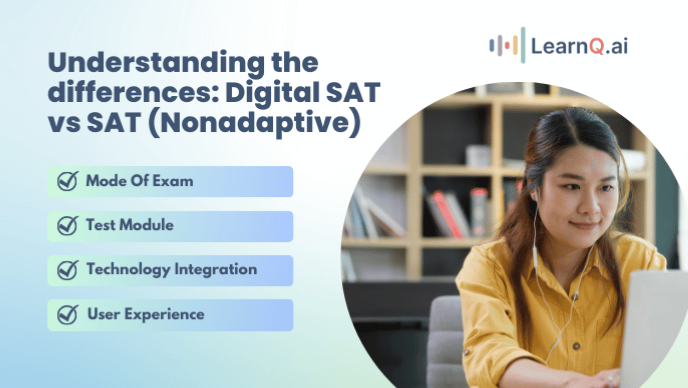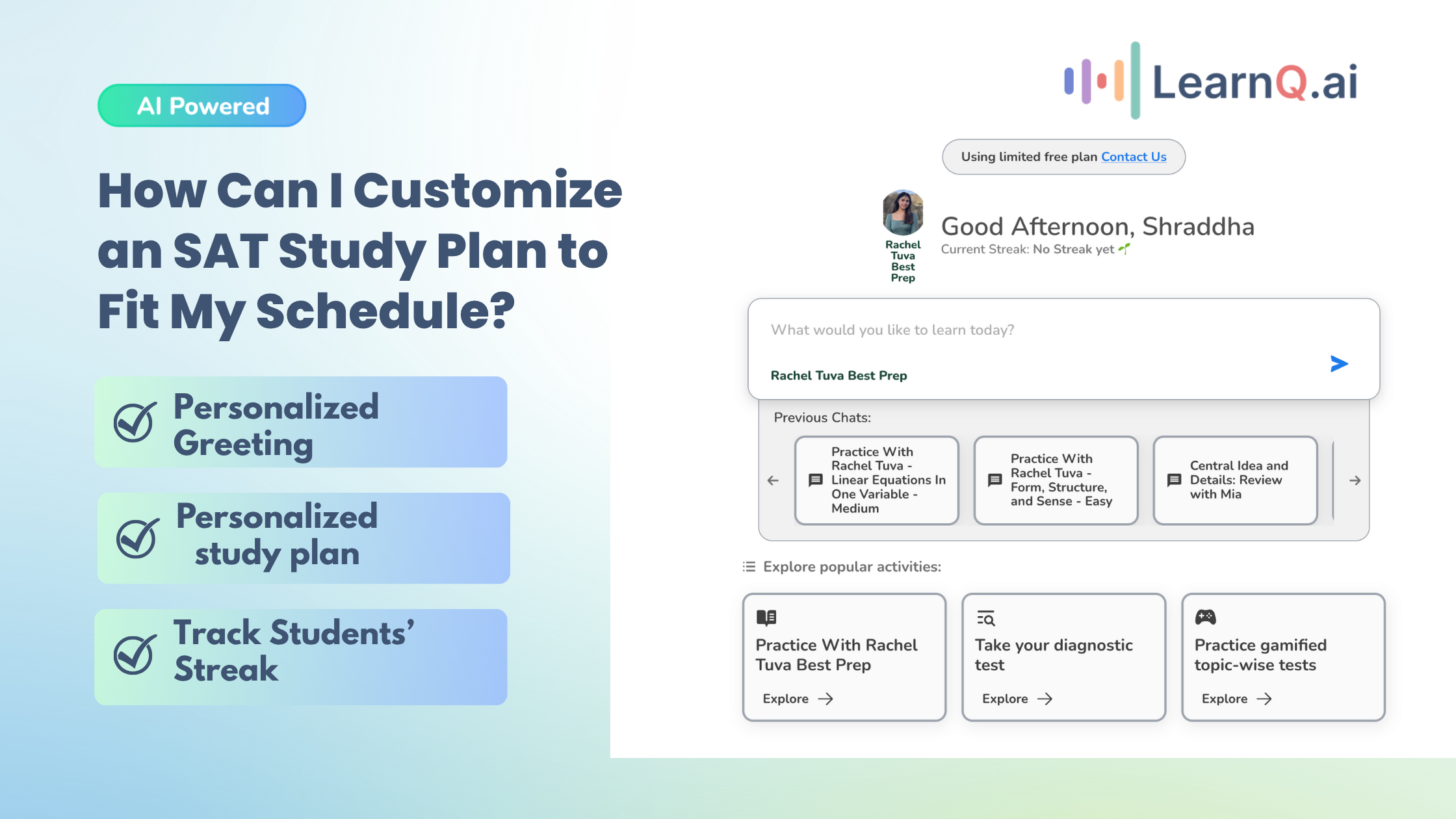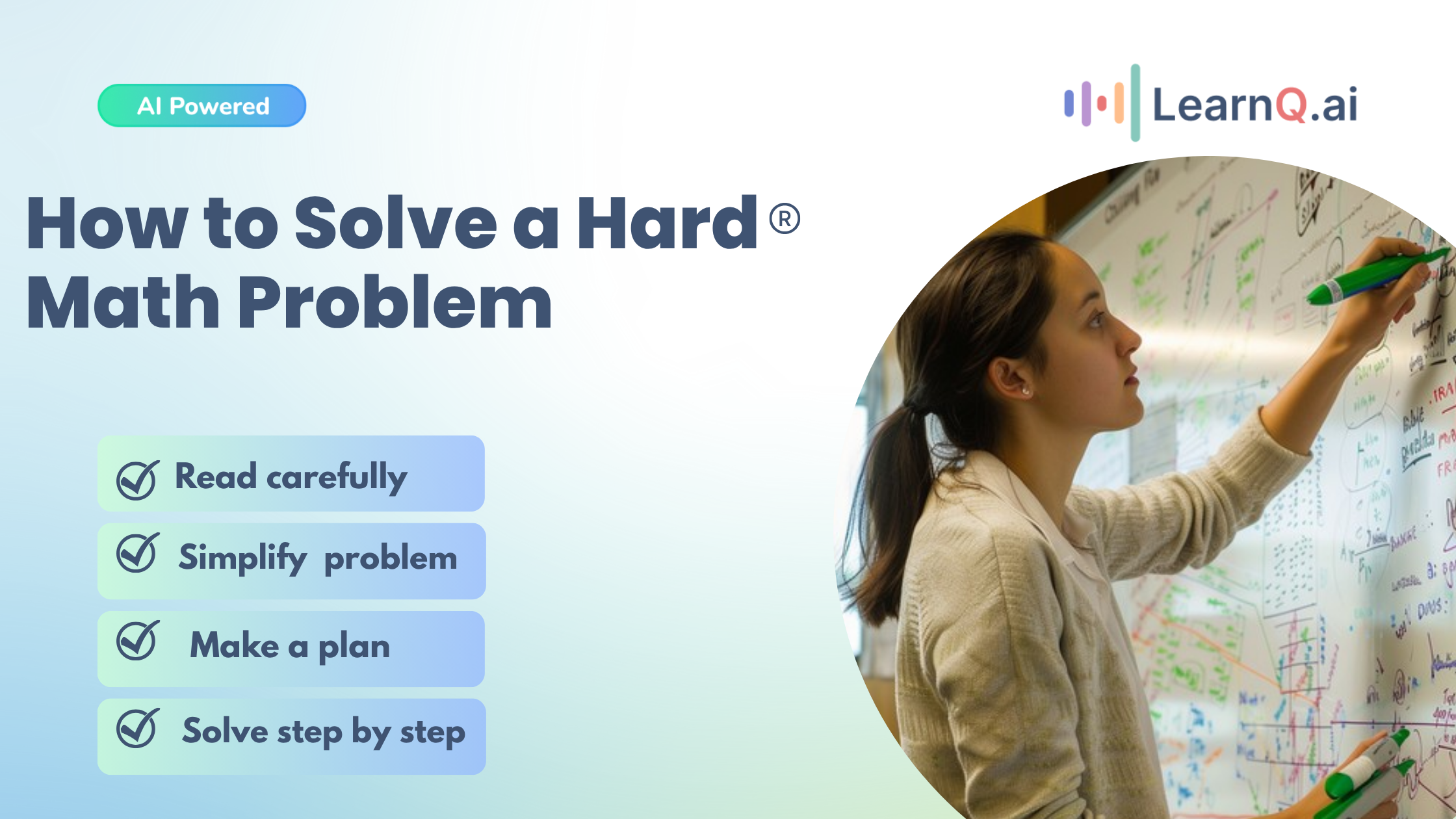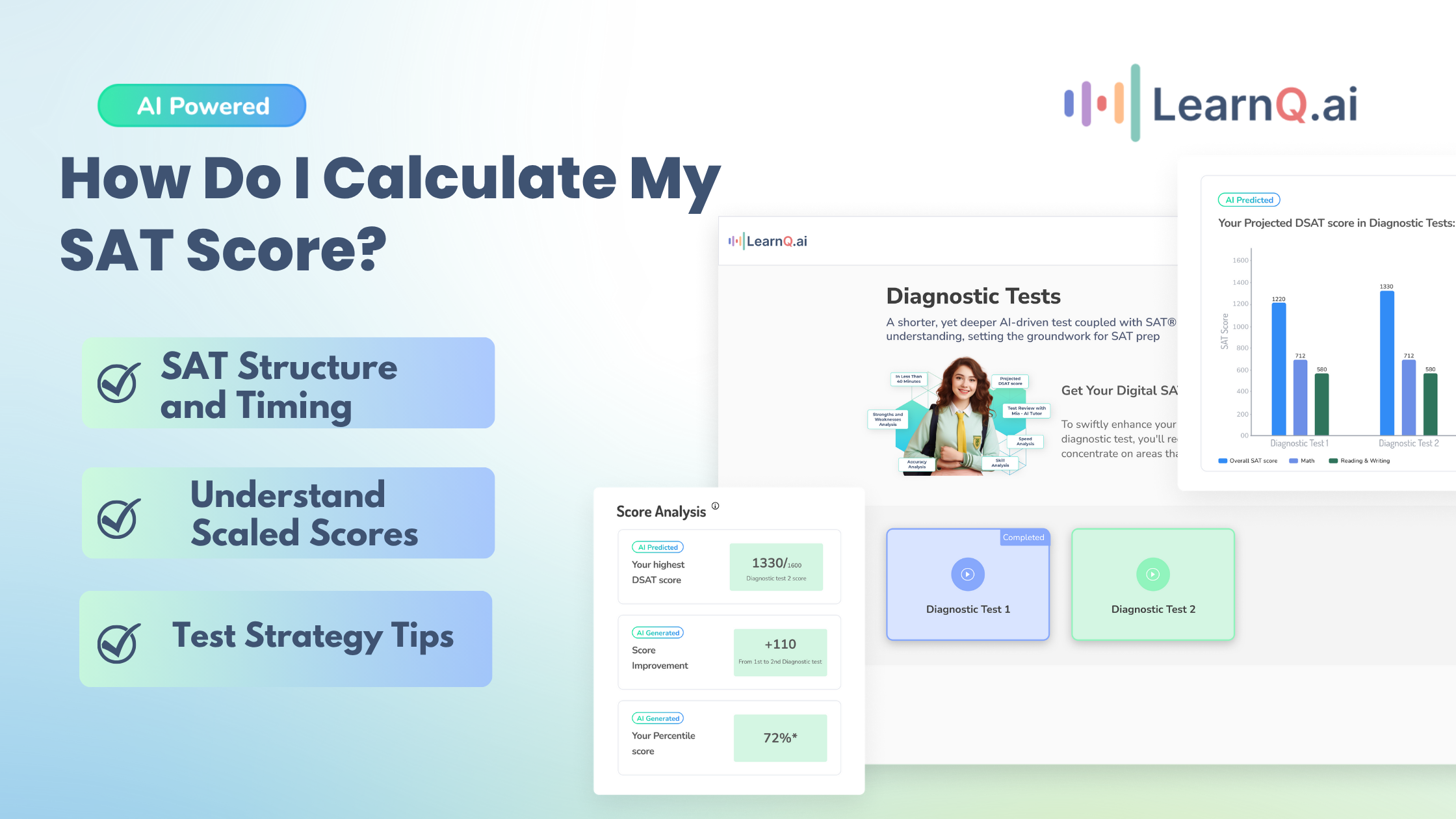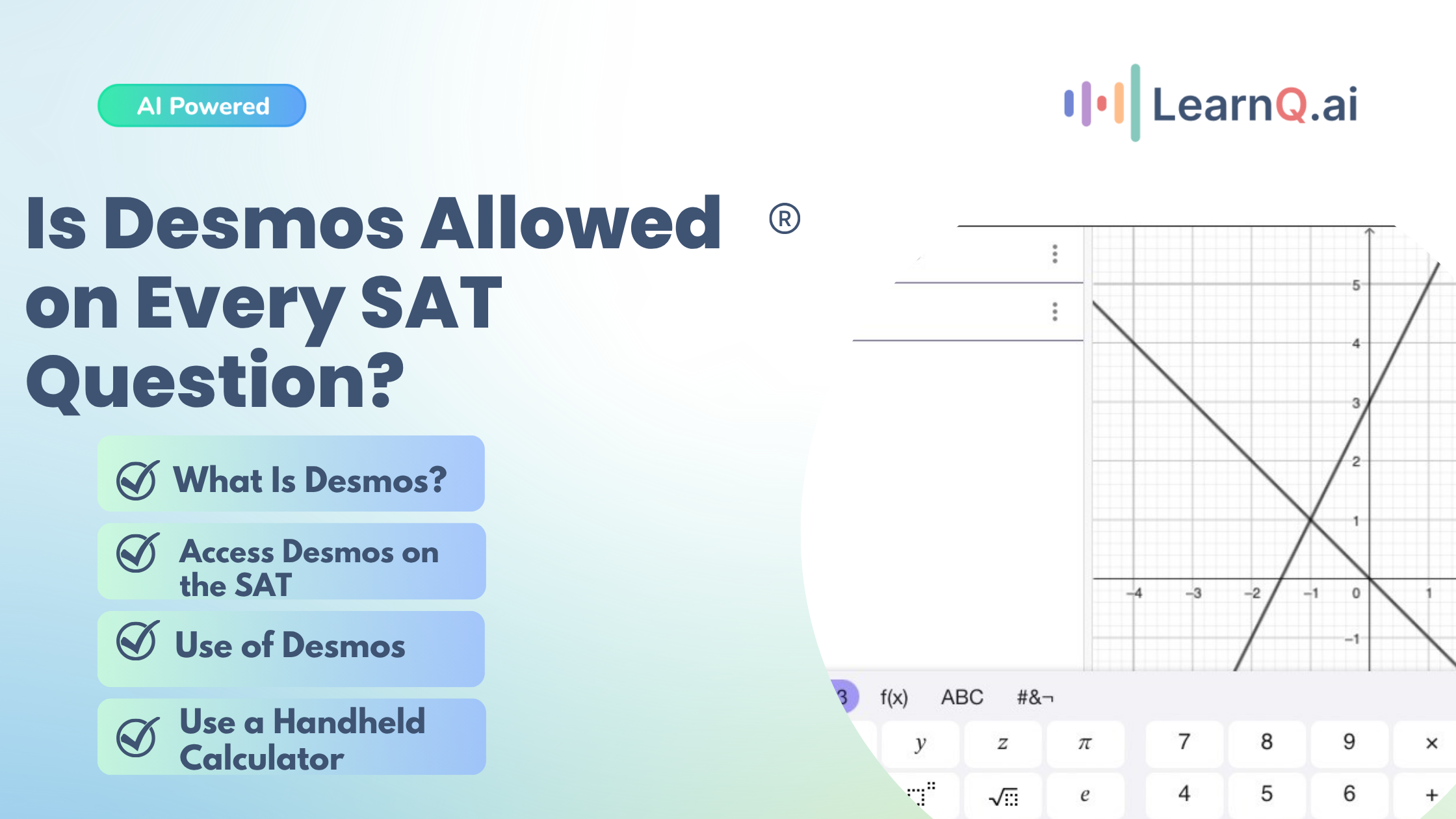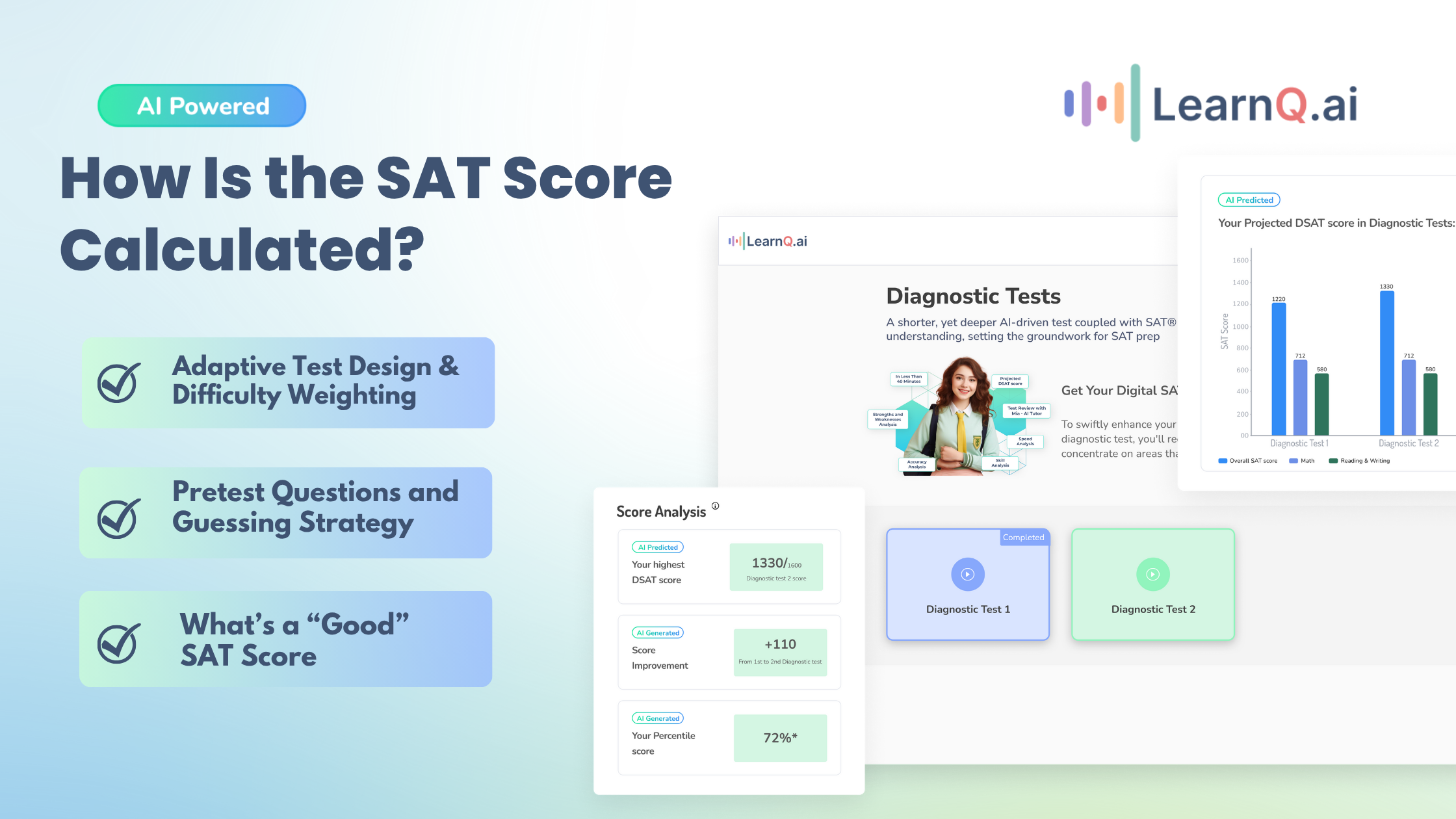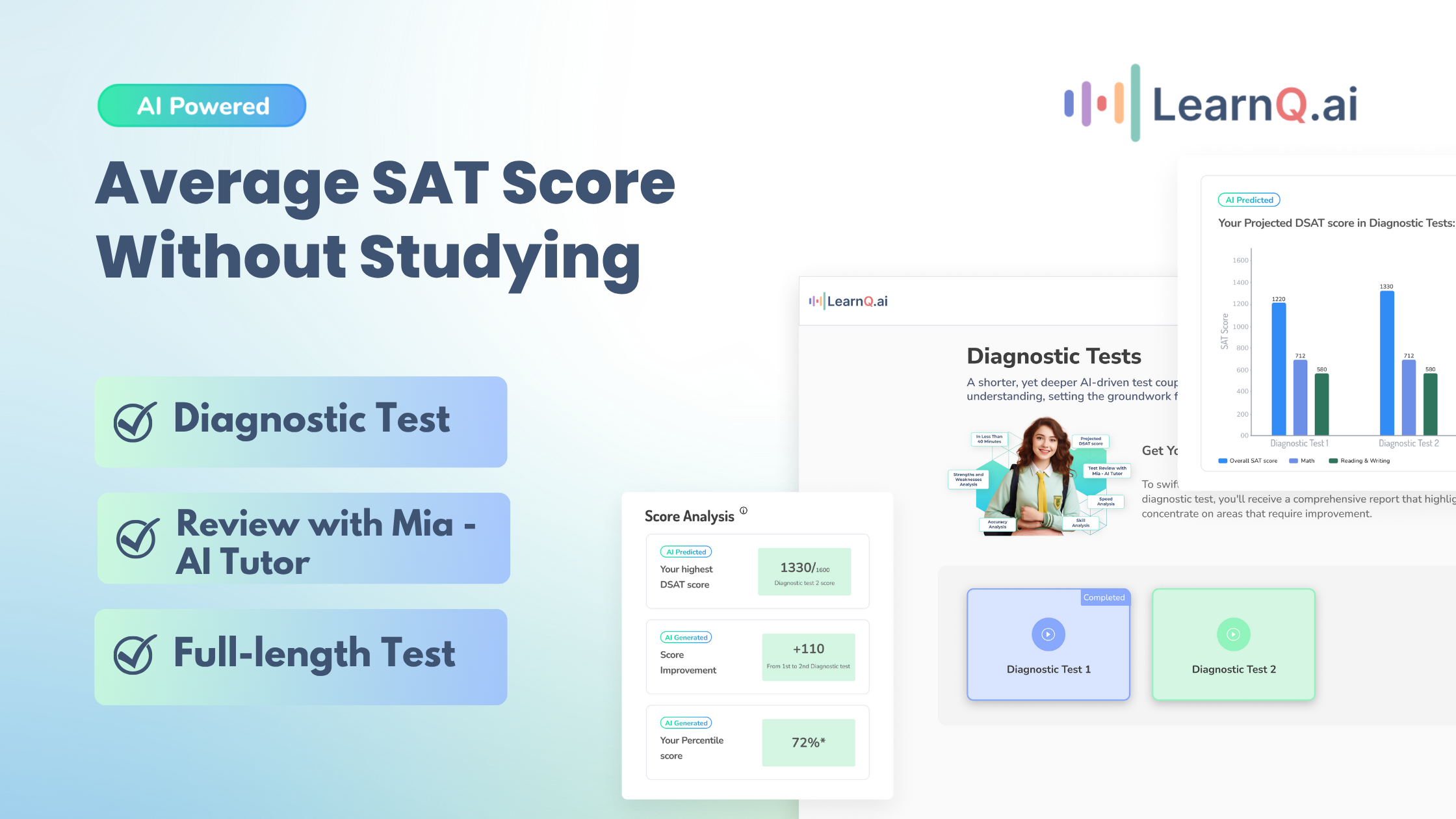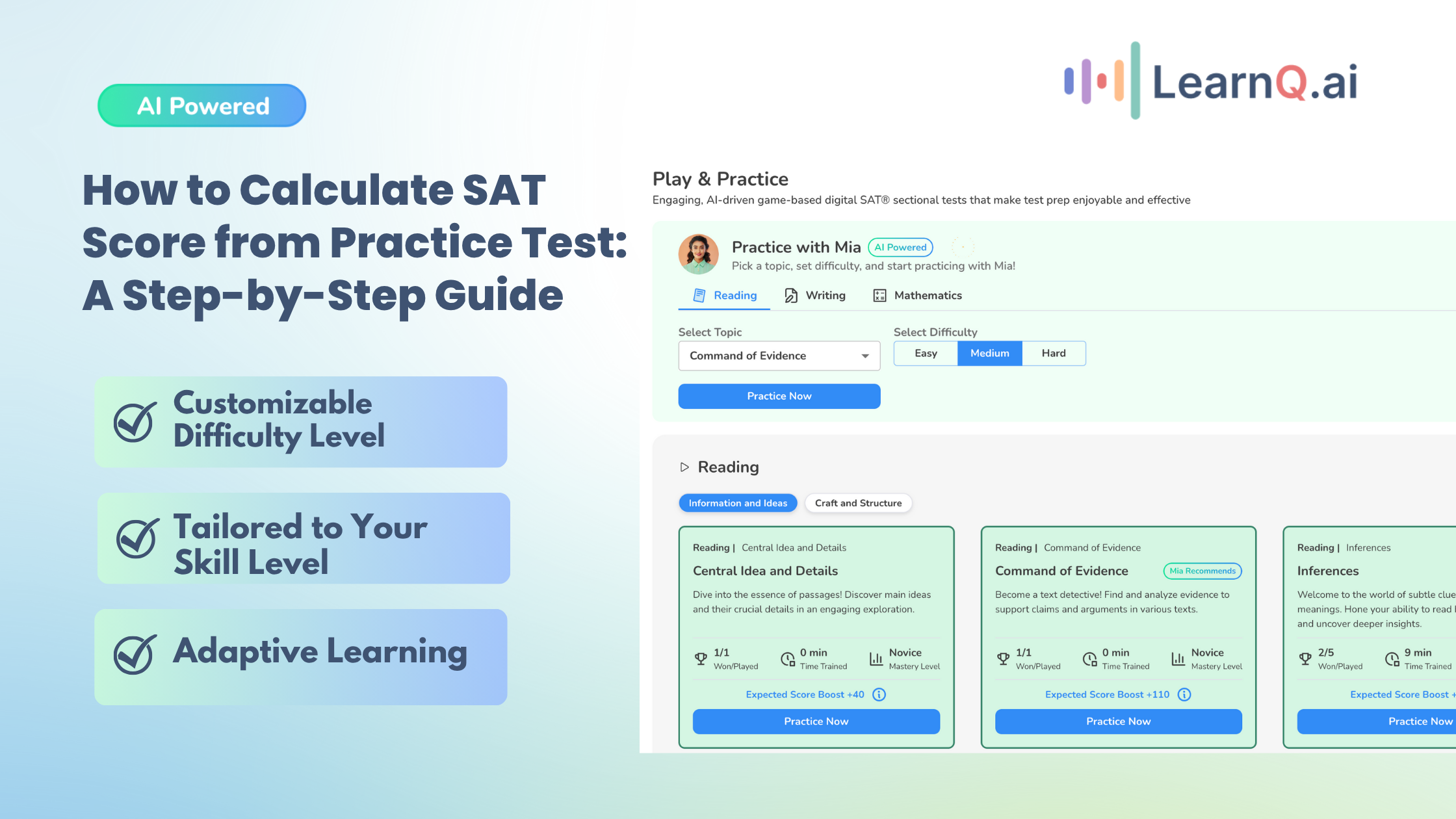The SAT, short for Scholastic Assessment Test, is a standardized and global exam used by colleges in the USA, Canada, Australia, UK, and India to evaluate applicants. It measures your readiness for college and provides colleges with a common data point to compare all applicants.
As of March 2024, the Digital SAT has replaced the old pen-and-paper version, which you can no longer take. Because of this, many students are left asking the big question: DSAT vs. SAT, which one is better?
By the end of this blog, you’ll understand the importance of selecting the correct SAT format for your college admissions journey. Choosing the format that best suits your strengths and preferences can significantly impact your performance and college application process.
5 Key Differences Between SAT and Digital SAT (DSAT)
- Mode of Exam
The most obvious difference is the mode of administration. The traditional SAT is taken with pen and paper, involving physical booklets and answer sheets. In contrast, the DSAT is administered on a computer, requiring students to be comfortable with digital devices and interfaces.
- Adaptive Testing
The DSAT employs adaptive testing technology, meaning the difficulty of questions adjusts based on your responses. If you answer a question correctly, the next question may be more challenging; the next question might be easier if you answer incorrectly. This contrasts with the static nature of the traditional SAT, where all students receive the same questions regardless of their performance.
Experience Personalized Digital SAT Training Available 24/7 with LearnQ.ai
- Changes in Module
The DSAT is significantly shorter, reducing the overall testing time by nearly 45 minutes. Other changes in the format are listed below:
| SAT (Non-adaptive SAT) | ||
| Section | Question Format | Time Allotted |
| Reading | 5 Passages with 52 MCQS | 65 minutes |
| Writing Language | 4 Passages with 44 MCQs | 35 minutes |
| Math Section 1 | 15 MCQs + 5 Subjective | 80 minutes |
| Math Section 2 | 30 MCQs + 8 Subjective | |
| Total | 154 | 3 hours |
| DSAT (Adaptive SAT) | ||
| Section | No. of Questions | Time |
| Reading and Writing Language | 54 MCQs with short passages | 64 minutes |
| Math | 33 MCQs + 11 subjective | 70 minutes |
| Total | 154 | 2 hours 14 min |
- Technology Integration
- Bluebook Software
Bluebook is the secure, custom-built application used to administer the Digital SAT. It ensures a standardized testing experience across different devices and locations. Bluebook handles the test’s adaptive nature, providing questions based on the test-taker’s performance.
- On-Screen Calculators
The DSAT provides an on-screen calculator for the Math section, which can be more convenient than bringing a physical calculator. This feature ensures all students can access a calculator, eliminating the risk of forgetting one or dealing with malfunctioning devices.
- Real-Time Answer Submission
Unlike the traditional SAT, where answers are marked on a paper sheet and manually processed, the DSAT allows real-time answer submission. This immediate data transfer reduces the likelihood of answer tampering and speeds up the scoring process.
- Convenience and Accessibility
Traditional SATs require physical test materials and specific test centers, while DSATs can be taken on various digital devices, potentially offering more flexible testing locations and reducing logistical constraints.
- User Experience
Traditional SAT is familiar, but it can be stressful due to manual answer marking and the risk of errors. DSAT offers a modern, user-friendly interface with features like on-screen calculators and streamlined navigation, potentially reducing test anxiety.
- Administration Format/ Increased Security
- Traditional SAT relies on physical proctoring and manual score submission. Security measures are in place, but there are risks of cheating and delays in scoring.
- DSAT incorporates advanced security features, such as randomized question order and proctoring software that monitors test-takers for suspicious behaviors. Immediate data submission reduces the risk of tampering and speeds up score reporting.
So, with these key differences in place, let’s see how the transition impacts you as a test-taker.
Also Read: Top 3 SAT Tips And Tricks For Students
LearnQ.ai is Powered by VEGA AI—Is your Institute Next?
Give students a Duolingo-style test-prep platform with Shopify-level customization for tutors and institutes.
Transition from SAT to DSAT: Effect on Test-takers
The shift from the traditional SAT to the Digital SAT (DSAT) significantly impacts students, influencing their preparation strategies, test-taking experience, and overall approach to the exam. Here’s how this transition affects students:
Preparation Strategies
Students need to adapt their study habits to suit the DSAT format:
- Digital Practice: Transitioning to digital practice tests is crucial. Students must become comfortable taking tests on a computer, using tools like Bluebook software to simulate the actual test environment.
- Understanding Adaptive Testing: It is essential to learn how adaptive testing works. Students should practice with adaptive test formats to get used to the idea that the difficulty of questions will change based on their responses.
Test-taking Experience
The experience of taking the DSAT differs from the traditional SAT in several ways:
- User Interface: Navigating a digital interface requires skills different from filling out a paper answer sheet. Students must practice using on-screen tools like the digital calculator and navigation buttons.
- Real-time Adaptation: Students must be prepared for a dynamic testing experience where the difficulty of questions adjusts in real-time. This can affect pacing and test-taking strategies, as students may encounter varying question difficulty levels throughout the test.
Comfort with Technology
Technology plays a significant role in the DSAT experience:
- Familiarity with Computers: Students more comfortable using computers may find the transition easier. Those less familiar with digital devices may need additional practice to build confidence.
- Technical Skills: Basic technical skills, such as typing and navigating software, become important. Students must ensure they can efficiently manage these aspects to focus on the test content.
Changes in Test Content and Structure
While the content areas remain similar, the structure of the DSAT introduces new dynamics:
- Adaptive Sections: The adaptive nature means fewer questions overall but with varying difficulty. Students must adapt to handling these changes and manage their time effectively.
- Combined Sections: The DSAT combines Reading and Writing into a single section. Students should practice transitioning smoothly between different types of questions within the same section.
Test Anxiety and Stress Management
The DSAT’s adaptive nature can impact test anxiety and stress levels:
- Adaptive Testing Pressure: Knowing that the test adapts to their performance might increase pressure on students. It’s essential to focus on each question individually and not overthink the difficulty adjustments.
- Familiarization: Familiarizing yourself with the test format can help reduce anxiety. Regular practice with digital tests can make the format more routine and less intimidating.
Accessibility and Convenience
The DSAT offers certain conveniences that can benefit students:
- On-screen Tools: The availability of on-screen calculators and digital highlighters can aid in solving problems and managing time.
- Flexible Testing Locations: Digital testing might offer more flexibility in testing locations, potentially reducing travel and logistical stress.
Impact on Test Scores and College Admissions
The transition to the DSAT might affect test scores and how colleges interpret them:
- Score Interpretation: Colleges will need to understand the DSAT’s adaptive nature when comparing scores to the traditional SAT. Students should stay informed about how colleges are adjusting their admissions criteria.
- Performance Consistency: Students should aim for consistent performance across practice tests to ensure they are well-prepared for the DSAT’s varying difficulty levels.
Take our accurate Diagnostic Test to find your SAT score and get a personalized study plan.
Understanding these impacts is crucial, but what about the educators who guide students through this process? Read to know how DSAT can affect them.
Enhance your Digital SAT study routine with AI-driven insights and personalized practice tests.
Transition from SAT to DSAT: Effect on Tutors
The shift from the traditional SAT to the Digital SAT (DSAT) has significant implications for tutors who prepare students for these exams. Here’s how this transition affects tutors and their approach to test preparation:
Adapting Teaching Methods
Tutors need to update their teaching methods to accommodate the new format of the DSAT. This involves:
- Familiarity with Adaptive Testing: Tutors must understand how adaptive testing works to help students navigate the new format effectively. This includes knowing how the test adjusts question difficulty based on performance and guiding students to handle varying question difficulties.
- Digital Literacy: Since the DSAT is on a computer, tutors must ensure their students are comfortable with digital interfaces. This may involve incorporating more online practice tests and digital resources into their teaching materials.
Updating Study Materials
Traditional paper-based practice materials may no longer be sufficient. Tutors must:
- Utilize Digital Resources: Incorporate online practice tests and digital question banks that mimic the DSAT’s format. Tools like the Bluebook software can be used for practice sessions to familiarize students with the test interface.
- Focus on Technology Integration: Emphasize the use of on-screen calculators and other digital tools during the DSAT. This ensures that students are prepared not only academically but also technically.
Curriculum Changes
The content covered in the SAT remains largely the same, but the delivery method changes. Tutors need to:
- Revise Lesson Plans: Modify lesson plans to include more digital practice and adaptive learning strategies. This may involve shorter, more frequent testing sessions to simulate the DSAT’s adaptive nature.
- Incorporate Adaptive Techniques: Teach students strategies specific to adaptive testing, such as handling progressively harder questions and the importance of pacing.

Professional Development
Tutors themselves need to stay updated with the latest changes. This can be achieved by:
- Attending Workshops and Training: Participate in professional development programs focused on the DSAT. These can provide insights into the new testing format and effective teaching strategies.
- Collaborating with Other Educators: Engage with other tutors and educators to share resources, strategies, and experiences related to the DSAT. Collaborative efforts can enhance the overall quality of test preparation.
Impact on Tutoring Businesses
For those who run tutoring centers or businesses, the transition to the DSAT also has business implications:
- Marketing New Services: Promote the ability to prepare students for the DSAT specifically, highlighting the unique strategies and resources offered.
- Investing in Technology: Ensure that the tutoring center is equipped with the necessary technology, such as computers and software, to prepare students for the DSAT effectively.
Boost Your Students’ Scores to 1500+ in the Digital SAT! Use LearnQ.ai for expert guidance and personalized prep to enhance their performance. Sign up today!
Now, let’s dive into the reasons behind this significant shift.
Why Was There a Need to Switch to Adaptive SAT?
Several factors contributed to the decision to introduce the Adaptive SAT:
- Personalized Assessment: Adaptive testing allows for a more customized assessment, potentially providing a more accurate measure of a student’s abilities.
- Efficiency: The Digital SAT can often be completed more quickly than the traditional test, as it adjusts to the test-taker’s performance, which can reduce the overall number of questions needed to determine a score.
- Enhanced Security: Digital testing can offer increased security measures, reducing the risk of cheating and ensuring the integrity of the test.
- Modernization: As education and testing move increasingly online, a digital format aligns with current technological trends and student familiarity with digital tools.
These changes aim to create a more efficient, secure, and accurate testing experience, aligning with modern educational practices and technological advancements.
LearnQ.ai is powered by VEGA AI—Is your institute next?
Offer students a Duolingo-style test-prep platform with Shopify-level customization for tutors and institutes.






Conclusion
In summary, transitioning from the traditional SAT to the Digital SAT (DSAT) marks a significant change in standardized testing. The DSAT, with its adaptive testing technology, computerized format, and integrated digital tools, offers a more efficient, secure, and personalized assessment experience.
Key highlights: DSAT vs SAT
- Mode of Exam: The shift from pen and paper to a computerized format.
- Adaptive Testing: Unlike the static traditional SAT, the DSAT adjusts question difficulty based on your responses.
- Changes in Sections: A streamlined structure with combined sections and reduced overall test duration.
- Technology Integration: Features like Bluebook software, on-screen calculators, and real-time answer submission make the DSAT more feasible
- Enhanced Security: Advanced proctoring and immediate data submission to ensure test integrity.
For personalized support and comprehensive preparation strategies, explore LearnQ.ai. Our platform offers tailored study plans, practice tests, and expert guidance to help you excel in the Digital SAT and achieve your college admissions goals. Visit LearnQ.ai to start your journey toward success today!

